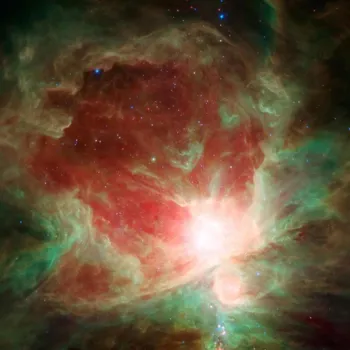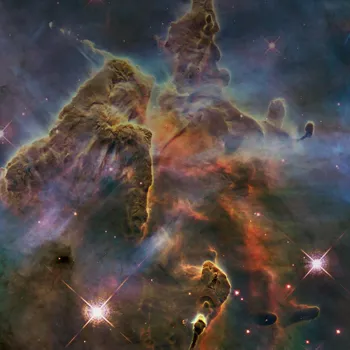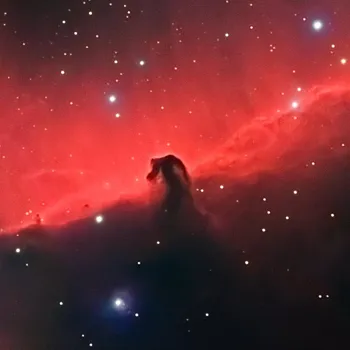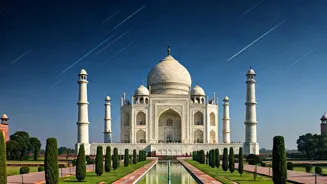Embark on a cosmic journey through the most stunning nebulae in the universe! Discover these celestial masterpieces, stellar nurseries, and cosmic wonders that hold secrets of star formation and galaxy
evolution. From the Pillars of Creation in the Eagle Nebula to the ethereal glow of the Ring Nebula, each nebula tells a unique story in the language of light and dust. Join us
Namaste viewers! Aaj hum aapko le chalte hain antariksh ki sair par, jahan hum dekhenge kuch adbhut nebulae. These nebulae, or interstellar clouds of dust, hydrogen, helium and other ionized gases, are like cosmic masterpieces painted across the night sky.
They are not just pretty to look at; they are also stellar nurseries where new stars are born. So, grab your virtual telescopes and let's begin our journey through the most stunning nebulae in the universe!
These cosmic wonders are not just visual treats, but hold secrets to the formation of stars and the evolution of galaxies. Every nebula has its own unique story to tell, a story whispered in the language of light, gas, and dust.
Scientists across the globe are working tirelessly to unravel these secrets, studying the composition, structure, and dynamics of nebulae to gain a deeper understanding of the universe we live in. So, get ready to witness the magic of these celestial paintings that are scattered across the cosmos.
Eagle Nebula: Pillars of Creation show cosmic life cycle
First up is the Eagle Nebula, also known as Messier 16. This nebula is famous for its Pillars of Creation, towering columns of gas and dust where new stars are forming.

Imagine massive structures of cosmic matter, sculpted by the powerful winds of young stars, reaching out into the vastness of space. The Eagle Nebula is a visual reminder that even in the grand scale of the universe, new life is constantly emerging.
The vibrant colors of the Eagle Nebula are caused by ionized gases, such as hydrogen, oxygen, and sulfur, which emit light at different wavelengths. This nebula is situated approximately 7,000 light-years from Earth.
The intense radiation from nearby stars is slowly eroding the Pillars of Creation, but luckily, it will take thousands of years to completely disappear. The Eagle Nebula is also a testament to the constant interplay between destruction and creation that is happening throughout the cosmos.
Exploring the magnificent Orion Nebula in the night sky
Next, we travel to the Orion Nebula, a stunning sight located close to the easily identifiable Orion's belt. This nebula, also known as Messier 42, is visible to the naked eye on a clear night, appearing as a fuzzy patch in the constellation Orion.

The Orion Nebula is one of the most studied objects in the night sky, and it's a favorite target for both amateur and professional astronomers. Inside the Orion Nebula, you will find the Trapezium Cluster, a group of young, hot stars that are responsible for illuminating the nebula.
These stars are emitting intense ultraviolet radiation, which ionizes the surrounding gas and causes it to glow brightly. The Orion Nebula will continue to give birth to new stars for millions of years to come, adding to the stellar population of our galaxy.
The sheer size of the Orion Nebula is mind-boggling, spanning over 24 light-years across.
Carina Nebula: Dynamic, massive stars, colorful structures, imminent supernova
Let us now talk about the Carina Nebula, a large and bright nebula that is four times larger and much brighter than the Orion Nebula.

Located approximately 7,500 light-years away, the Carina Nebula is home to many massive stars, including Eta Carinae, one of the most luminous stars known in our galaxy, which is expected to explode as a supernova in the near future.
The Carina Nebula is a dynamic and ever-changing region of space, with powerful stellar winds and intense radiation shaping its intricate structures. The nebula is rich in gas and dust.
The different colors in the Carina Nebula are created by a combination of factors, including the different elements present in the gas and dust, and the temperature of the gases.
A dying star forms the Butterfly Nebula, a cosmic beauty
The Butterfly Nebula, also known as NGC 6302, resembles a butterfly stretching its wings. Formed by a dying star, it displays intricate patterns of gas ejected into space. Imagine a cosmic butterfly, its wings formed by the expelled layers of a star nearing the end of its life.
The Butterfly Nebula is one of the brightest and most fascinating planetary nebulae known. The Butterfly Nebula is a testament to the beauty that can arise from the death of a star. The central star of the Butterfly Nebula is one of the hottest stars ever discovered.
The wings of the Butterfly Nebula are expanding at a speed of over 600,000 miles per hour.
Ring Nebula: A mesmerizing planetary nebula's story
We now come to the Ring Nebula, known as Messier 57, a planetary nebula created by a star shedding its outer layers. It appears as a glowing ring of gas, a colorful spectacle in the night sky. The Ring Nebula is a beautiful example of the final act of a star's life.
While the Ring Nebula appears to be a ring-shaped, it is in fact a spherical shell of gas that is being viewed from a particular angle. One of the most studied and photographed planetary nebulae, the Ring Nebula offers insight into the fate of stars like our Sun.
The central star of the Ring Nebula is now a white dwarf, a small, dense remnant of the original star. The Ring Nebula is steadily expanding outwards into space, enriching the interstellar medium with the elements that were once forged inside the star.
Exploring the Horsehead Nebula's iconic shape in Orion
Finally, let's explore the Horsehead Nebula, part of the larger Orion Molecular Cloud Complex. Its distinctive shape, resembling a horse's head, is formed by a dark cloud of dust silhouetted against the glowing nebula behind it.

The Horsehead Nebula is a popular target for astrophotographers because of its striking appearance. The Horsehead Nebula is a testament to the power of dust to shape the appearance of nebulae.
The Horsehead Nebula will eventually be eroded away by the radiation from nearby stars, but it is likely to persist for millions of years. It is a cold, dense cloud of gas and dust that is gravitationally bound.
Nebulae showcase universe's beauty and diversity, key to star formation studies
These nebulae are just a few examples of the amazing diversity and beauty that can be found in our vast universe. Each nebula is a unique masterpiece painted by the forces of nature. They are reminders of the ongoing processes of star birth and death that shape our galaxy.
Scientists are working hard to study these nebulae, gathering data that helps us understand the origins of stars and the composition of our universe.
Nebulae: cosmic wonders fueling curiosity and exploration in space
So, the next time you are gazing at the night sky, remember the nebulae, these stellar nurseries and cosmic artworks. They remind us that the universe is an active, vibrant place filled with wonder and mystery.
From the towering Pillars of Creation to the ethereal glow of the Ring Nebula, these cosmic wonders inspire us, driving curiosity and exploration. The study of nebulae has implications that reach far beyond the realm of astronomy.
As technology continues to advance, we can expect even more fascinating discoveries about these wonders in space. Keep looking up, for the universe is full of wonders waiting to be discovered!
AI Generated Content. Glance/InMobi shall have no liability for the content









